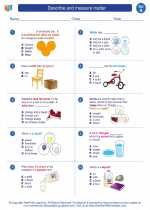Phospholipids: Structure and Function
Phospholipids are a class of lipids that are a major component of all cell membranes. They are made up of a glycerol molecule, two fatty acid chains, a phosphate group, and a polar head group. The structure of phospholipids allows them to form a lipid bilayer in aqueous environments, such as the cell membrane.
Structure of Phospholipids
Each phospholipid molecule has a hydrophilic (water-attracting) head and two hydrophobic (water-repelling) tails. The head is composed of a phosphate group and a polar head group, while the tails are made up of fatty acid chains. This unique structure allows phospholipids to spontaneously arrange themselves into a double layer, with the hydrophilic heads facing outward and the hydrophobic tails facing inward.
Function of Phospholipids
The primary function of phospholipids is to form the structural foundation of cell membranes. The lipid bilayer created by phospholipids acts as a barrier that separates the internal contents of the cell from the external environment. This barrier is essential for maintaining the integrity and functionality of the cell.
Additionally, phospholipids play a role in cellular signaling and transport. They contribute to the formation of lipid rafts, which are microdomains within the cell membrane that are involved in various cellular processes, including signal transduction and membrane trafficking.
Study Guide
- What are the components of a phospholipid molecule?
- Describe the structure of a phospholipid bilayer.
- What is the function of phospholipids in cell membranes?
- How do phospholipids contribute to cellular signaling and transport?
- Explain the significance of lipid rafts in cellular processes.
Understanding the structure and function of phospholipids is essential for gaining insight into the fundamental properties of cell membranes and their role in maintaining cellular homeostasis.
.◂Science Worksheets and Study Guides First Grade. Describe and measure matter

 Worksheet/Answer key
Worksheet/Answer key
 Worksheet/Answer key
Worksheet/Answer key
 Worksheet/Answer key
Worksheet/Answer key
 Vocabulary/Answer key
Vocabulary/Answer key
 Vocabulary/Answer key
Vocabulary/Answer key
